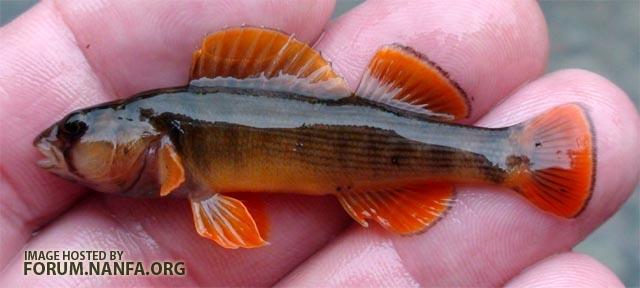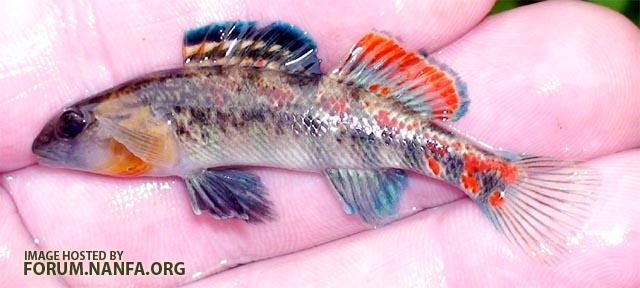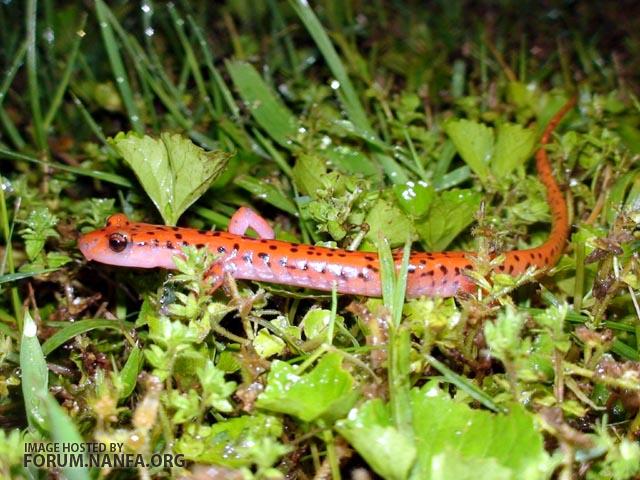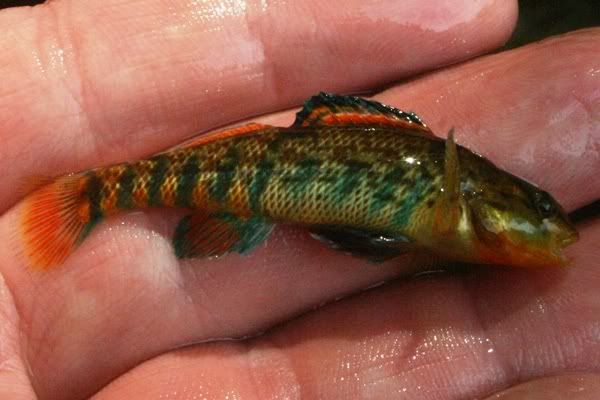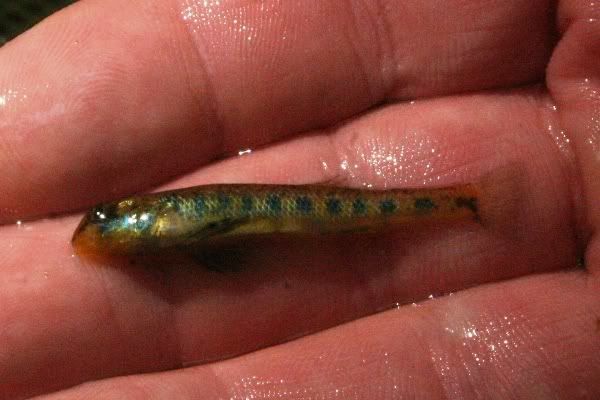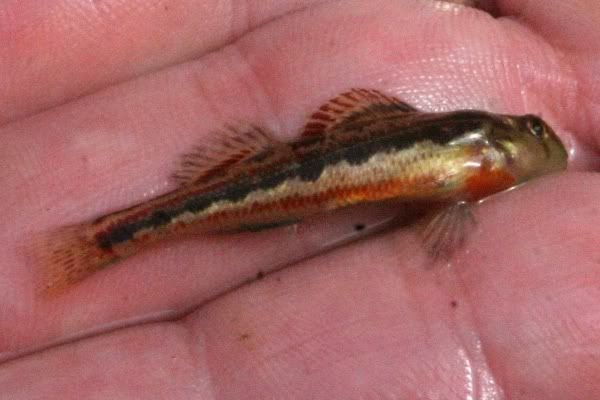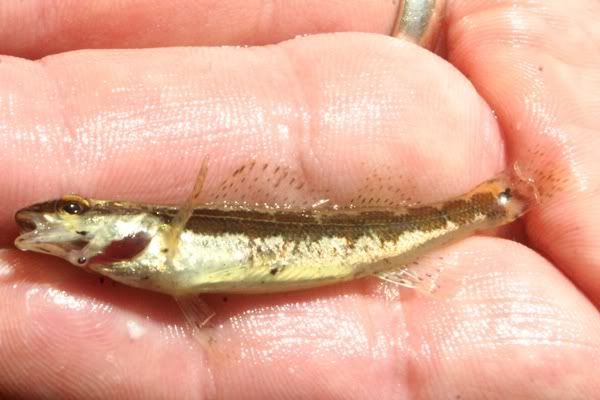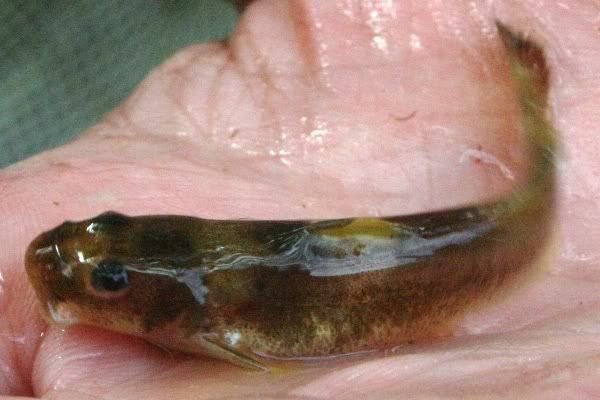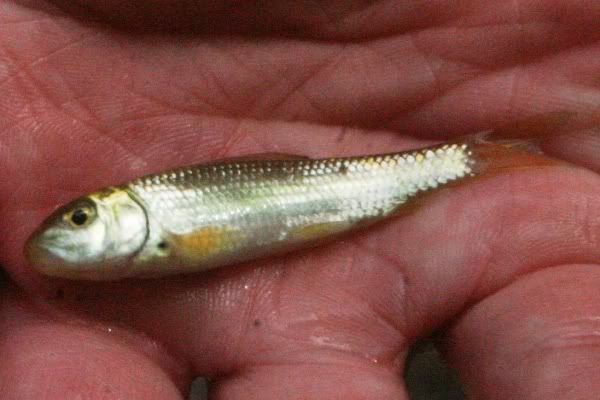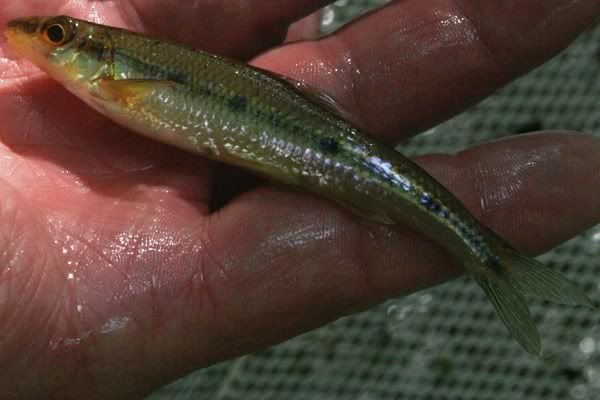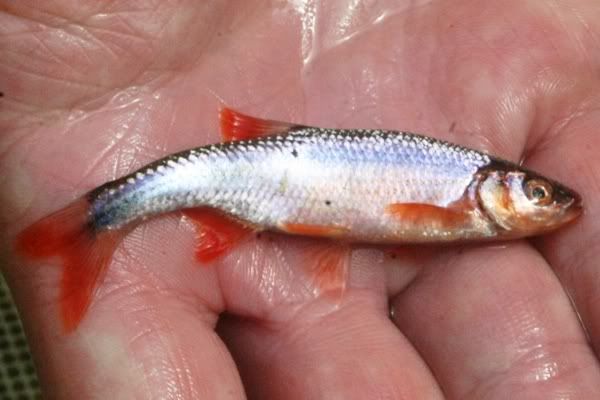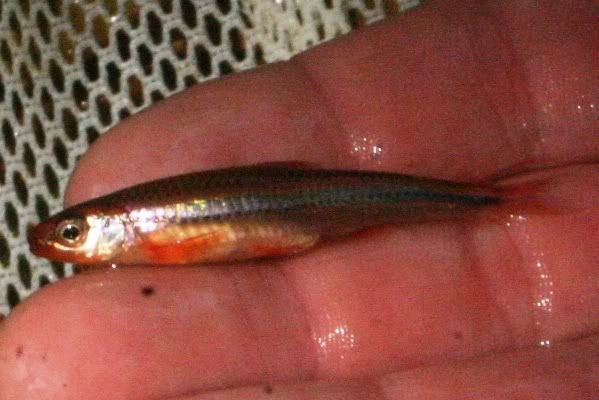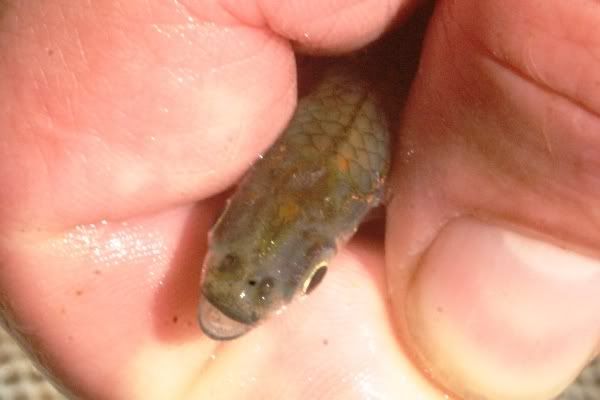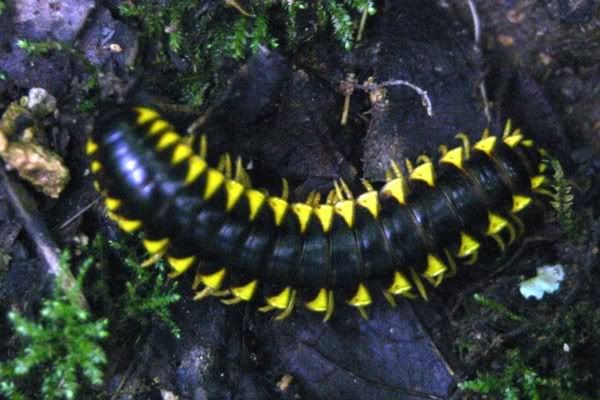A gang of us recently took a trip to the Green River watershed of the great state of Kentucky. NANFA members included Casper Cox (appearing as himself), Jeff Grabarkiewicz (fat pocketbook), Philip Kukulski (Uniseine), and Nathan Parker (Newt). Those getting aquainted (or freshly converted) were Phil Mathias and Justin Selden, both of the department at UT.
I have had some spectacular trips in the last couple years while in grad school, and I finally got bit. It was wet. Really wet. I don't even have photographs... It went something like this:
I took this picture of a mountain madtom (Noturus eleutherus):

And then took a second photo:

Which was blurred because it was fixed distance that was out of focus because I just shorted out the shutter with my wet finger. And it was too wet to dry it out for a couple days. I did manage to get this lovely shot off three days later...

...which I immediately shorted out the shutter again on the first photograph at that site.
How wet was it? This was our photo session on the first day after burning some serious road to find this site:
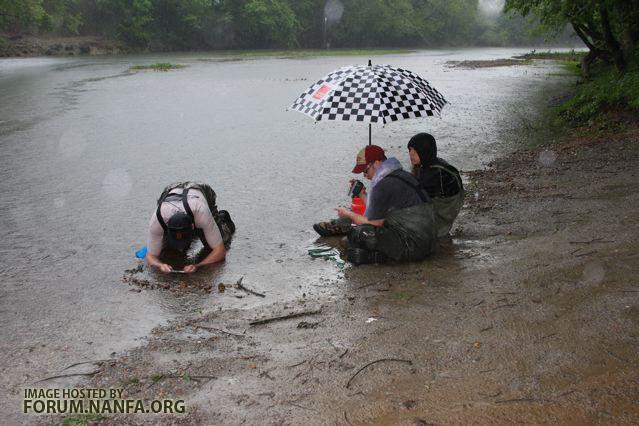
Left to Right: Grabarkiewicz, Crail, Mathias (taken by Selden)
Fortunately, the bar was set so low that first day that we could only do better. And indeed, we did
Sadly, we didn't run across the glittering prize for the trip... Thoburnia atripinnis, the blackfin sucker. This is a Barren River endemic, and I'm not sure if we were in the right habitats or not, with everything all flooded up. The rivers were totally different two days later, which worked to our advantage in some situations (we later realized), but not in others. However, I did add some new species to my "life list", and one that I am particularly stoked about is the redtail chub, Nocomis effusus when we snuck into part of the upper Red River.
I really enjoyed seeing the endemics, the orangefin darter, spledid darter and frecklebelly darter. Also saw a ton of longhead and channel darter, which both have become uncommon in spite of wide ranges.
And in a very cool find, by walking up a tiny trib, we ran across the headwater darter, E. lawrenci, which is a split out of the orangethroat darter complex. You know, I've had doubts about some splits in some cases... But THAT fish is so different from any spectabile I've seen. Wow. Pics to come!
So I'm going to do this in reverse, since I'm definately not the one with the photos this time, and do all the listing and so forth. I'm also going to skip listing by site... It'll take too much time, and some of these are sensitive species, esp the mussels.
And, we'll tell some stories as we gather pictures and film.
The Fishes
Lampreys
Ichthyomyzon castaneus, chestnut lamprey (adult)
Ichthyomyzon sp. (ammocoete forms)
Minnows
Campostoma oligolepis, largescale stoneroller
Cyprinella spiloptera, spotfin shiner
Erimystax dissimilis, streamline chub
Hybopsis amblops, bigeye shiner
Luxilus chrysocephalus, striped shiner
Lythrurus fasciolaris, scarlet shiner
Notropis leuciodus, Tennessee shiner
N. photogenis, silver shiner
N. rubellus, rosyface shiner
Pimephales notatus, bluntnose minnow
P. vigilax, bullhead minnow
Suckers
Hypentelium nigricans, northern hogsucker
Moxostoma duquensnei, black redhorse sucker
M. erythrurum, golden redhorse sucker
Sculpins
Cottus carolinae, banded sculpin
Killifishes
Fundulus catenatus, northern studfish
Fundulus notatus, blackstripe topminnow
Silversides
Labidesthes sicculus, brook silverside
Catfishes
Noturus eleutherus, mountain madtom
Sunfish
Ambloplites rupestris, rock bass
Lepomis cyanellus, green sunfish
Lepomis macrochirus, bluegill sunfish
Lepomis megalotis, central longear sunfish
Perches
Etheostoma barrenense, splendid darter (endemic to Barren River)
E. blennoides, greenside darter
E. bellum, orangefin darter (endemic to Green River)
E. caeruleum, rainbow darter
E. flavum, saffron darter
E. lawrencei, headwater darter (limited range in KY and TN)
E. maculatum, spotted darter
E. nigrum, johnny darter
E. rafinesquei, Kentucky snubnose darter (endemic to Green River)
E. squamiceps, spottail darter
E. stigmaeum sp. cf. , bluegrass darter (endemic to Green River)
E. tippecanoe, Tippecanoe darter
E. zonale, banded darter
Percina caprodes, logperch darter
P. copelandi, channel darter
P. evides, gilt darter
P. macrocephala, longhead darter
P. stictogaster, frecklebelly darter (limited range in KY and TN)
Sadly, we were very limited in where we could find mussels, since we were relegated to headwaters. I can't WAIT to go back and look there in the larger sections in the fall sometime!!! It has to be amazing!
We weren't very good about writing these down, so it's from memory... But I'm defaulting to the most conservative list (I mean how the heck do you NOT see grandis??). I need to get a permit for the next trip so we have vouchers. That should be fun to write
The Mussels (L = live, FD = fresh dead, W = weathered)
Actinonaias ligamentina, mucket (L)
Alasmidonta marginata, elktoe (L)
Amblema plicata, threeridge (L)
Cyclonaias tuberculata, purple wartyback (L)
Cyprogenia stegaria, fanshell (FD) (Fed Endangered)
Elliptio dilatata, spike (L)
Epioblasma triquetra , snuffbox (W)
Fusconaia flava, Wabash pigtoe (L)
Fusconaia subrotunda, long-solid (FD)
Lampsilis fasciola, wavy-rayed lampmussel (L)
Leptodea fragilis, fragile papershell (L)
Ligumia recta, black sandshell (L)
Megalonaias nervosa, washboard (L)
Obliquaria reflexa, three-horn wartyback (FD)
Pleurobema clava, clubshell (FD) (Fed Endangered)
Pleurobema cordatum, Ohio pigtoe (FD)
Pleurobema plenum, rough pigtoe (FD)
Pleurobema sintoxia, round pigtoe (L)
Potamilus alatus, pink heelsplitter (L)
Ptychobranchus fasciolaris, kidneyshell (L)
Quadrula cylindrica, rabbitsfoot (L) (Fed Candidate)
Quadrula pustulosa, pimpleback (L)
Quadrula metanevra, monkeyface (FD)
Toxolasma lividus, purple liliput (Fed Candidate)
Tritogonia verrucosa, pistolgrip (L)
Truncilla truncata, deertoe (FD)
Villosa vanuxemensis, mountain creekshell (FD)
Okay, that's about enough for tonight
Todd
Edited by farmertodd, 28 May 2008 - 11:37 PM.





